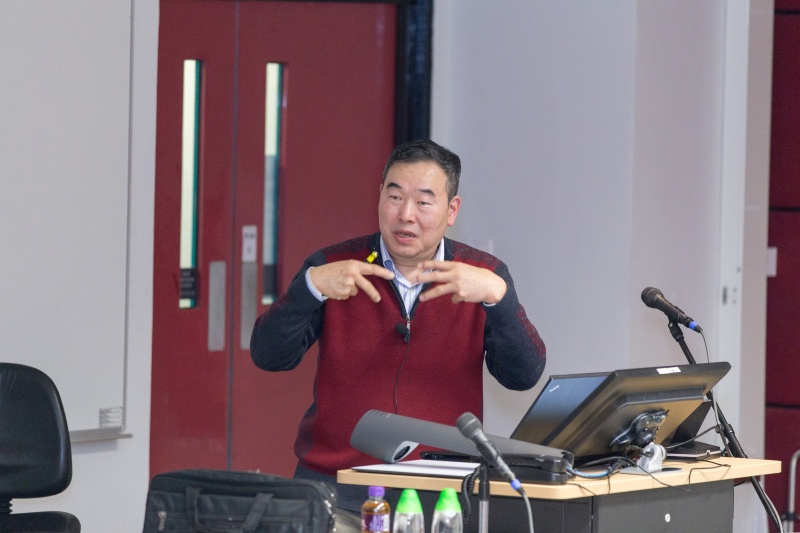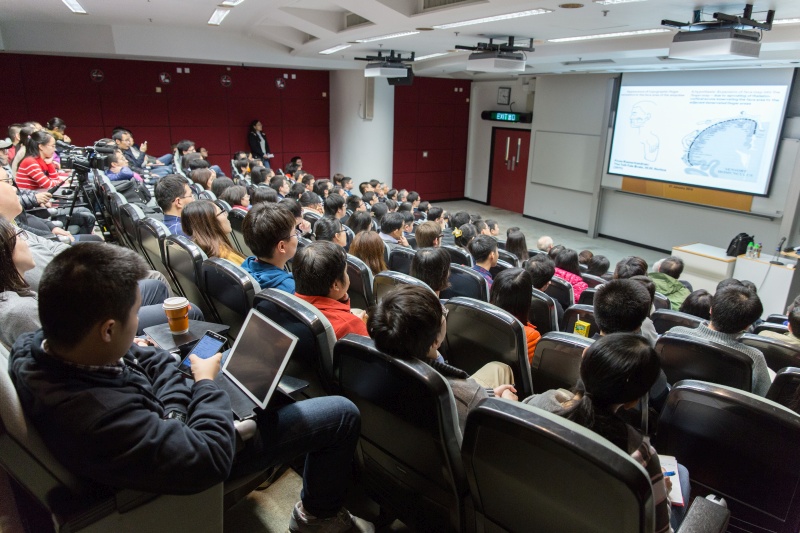Neural Plasticity: From Synapse to Perception
Abstract
The cognitive functions of the brain, such as learning and memory, depend on the ability of neural circuits to change their properties of signal processing after these circuits have been used. Many of these use-dependent changes (“plasticity”) occur at synapses, where signals are transmitted between nerve cells (neurons). Depending on the pattern of neuronal activities, repetitive synaptic transmission could cause long-term potentiation (LTP) or long-term depression (LTD) of synapse efficacy for future transmission. In this talk, the speaker will summarize his studies on how the timing of neuronal activities (spikes) in the pre- and post-synaptic neurons determines whether a synapse undergoes LTP or LTD, a phenomenon known as “Spike Timing-Dependent Plasticity” (STDP), and how STDP may provide the mechanism for coding and storing the information on the temporal sequence of sensory signals, an essential component of episodic memory. Besides functional modification of synaptic efficacy, the speaker will provide evidence that structural rewiring synaptic connections also occurs to a limited extent in adult brain regions that are involved in storing long-term memory. The speaker will also discuss in general the idea that neural plasticity is the main factor that shapes the development of neural circuits, and that neural plasticity offers the potential for functional recovery from injuries and diseases of the adult brain. Finally, to argue that higher cognitive functions in humans such self-awareness may originate from experience-dependent neural plasticity, the speaker will present his recent findings showing that mirror self-recognition, a cognitive function known to be limited only to humans and great apes, could be acquired by rhesus monkeys following training for visual-somatosensory association. This presentation aims to illustrate to the general audience (without biological background) how brain research at the cellular level may shed light on our understanding of the human brain, the most mysterious biological system for scientific exploration.
About the speaker
Prof. Poo Mu-ming received his BS in physics from Tsinghua University in Taiwan in 1970 and PhD in biophysics from Johns Hopkins University in 1974. He went on to work at Purdue University, University of California at Irvine, Yale University, Columbia University, and University of California at San Diego before joining University of California at Berkeley, where he served as the Head of Division of Neurobiology in the Department of Molecular and Cell Biology in 2002-2007, and is currently the Paul Licht Distinguished Professor in Biology. Since 1999, Prof Poo has also served as the Director of the Institute of Neuroscience at the Chinese Academy of Sciences in Shanghai.
Prof. Poo’s research focuses on the problems of brain development and cognitive functions such as learning and memory. In the 1990s, he defined a breakthrough research method that could systematically chart how neuronal connections are formed, while also being able to manipulate chemical and environmental factors to observe how these connections then change. He was also the first to discover that neurotrophins can potentiate synaptic transmission.
Prof. Poo has received numerous awards, including the Javitz Neuroscience Investigator Award of the US National Institutes of Health, the Ameritec Prize and the Ray Wu Society Award among other recognitions. He is a member of the US National Academy of Sciences, a Fellow of the American Association for Advancement of Science, an Academician of Academia Sinica in Taiwan and a founding member of the Academy of Sciences of Hong Kong. Prof. Poo has also been involved in HKUST’s development since its establishment. In recognition of his exceptional contribution to science and his distinguished service to the university, Prof Poo was honored with the Doctor of Science honoris causa from HKUST in 2014.











